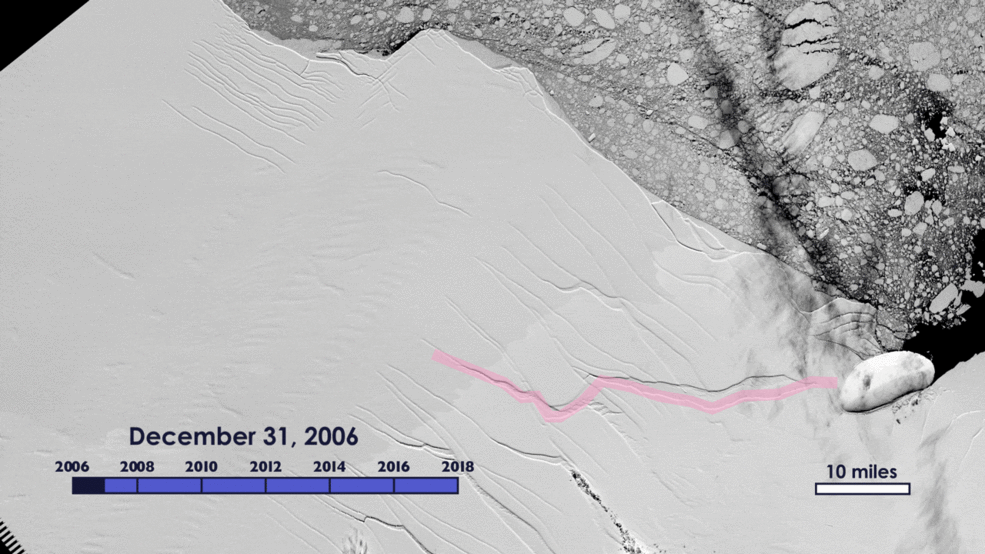NASA Celebrates Landsat 8 Satellite's 5 Years of Stunning Earth Images
As an enormous ice island larger than the state of Delaware separated from the South Pole's Larsen C ice shelf in July 2017, the Landsat 8 satellite — a collaboration between NASA and the U.S. Geological Survey (USGS) — used its thermal infrared imaging system to capture the event even in the sunless Antarctic winter.
Watching the ice island calve into the ocean is only one of the many accomplishments of Landsat 8, which recently celebrated five years in orbit. The latest in a family of U.S. government Landsat satellites stretching back to 1972, the imager has helped scientists to study Earth in unprecedented detail. During its more than 26,500 orbits, Landsat 8 has taken 1.1 million scenes of our home planet, NASA officials said in a statement.
"I am thrilled by the performance of Landsat 8," NASA project scientist Jim Irons said in the statement. "And even more so by the adoption of the data by so many people for important, consequential research and applications." [Photos: NASA's Advanced Landsat Earth-Watching Satellite]
Landsat 8 surveys the entire globe from polar orbit. The spacecraft's sophisticated sensors follow the movement of glaciers and sea ice, monitor coastal and inland water quality, detect algae blooms, and measure the growth and health of crops and vegetation.

Landsat 8's Operational Land Imager (OLI) and Thermal Infrared Sensor instruments are more sensitive than the instruments aboard its predecessor, Landsat 7, allowing for better monitoring of water resources, according to NASA. OLI gathers data in two new spectral bands: a deep blue (coastal/aerosol) band and a cirrus cloud detection band.
"We can now pull out detailed maps of water constituents, including chlorophyll, dissolved organic matter, and suspended sediment," Jeff Masek, project scientist for the upcoming successor satellite, Landsat 9, said in the statement.

The Landsat series provides an unbroken record of imagery stretching back 46 years, allowing scientists to track changes in the Earth over nearly five decades. The program's entire data archive is free to the public.
Get the Space.com Newsletter
Breaking space news, the latest updates on rocket launches, skywatching events and more!
Landsat 8 was built for a five-year life span in orbit, but NASA and USGS officials say they expect the spacecraft to continue returning data for many years to come. Its predecessor, Landsat 7, is still operating after 19 years in orbit.
NASA plans to launch Landsat 9 in 2020, officials said.
Follow us @Spacedotcom, Facebook and Google+. Original article on Space.com.
Join our Space Forums to keep talking space on the latest missions, night sky and more! And if you have a news tip, correction or comment, let us know at: community@space.com.
Douglas Messier is the managing editor of Parabolicarc.com, a daily online blog founded in 2007 that covers space tourism, space commercialization, human spaceflight and planetary exploration. Douglas earned a journalism degree from Rider University in New Jersey as well as a certificate in interdisciplinary space studies from the International Space University. He also earned a master's degree in science, technology and public policy from George Washington University in Washington, D.C. You can follow Douglas's latest project on Twitter and Parabolicarc.com.









